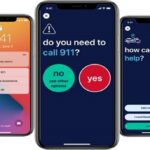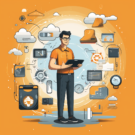The world is progressively witnessing heightened interconnectedness. Sensors present in physical objects capture data and link to digital communication networks. The data can then be analyzed, precipitating the execution of “smart actions.”
Executive Summary
"IoT data will allow insurers to differentiate risk much more granularly than workers compensation code and payroll," observe The Hartford's Dan Campany and IoT Observatory's Matteo Carbone in this outline of The Hartford's strategy for applying IoT innovations across commercial lines.Updating an earlier article they wrote for Carrier Management in 2021—"A Repeatable Model for Using IoT to Transform Commercial Insurance"—the authors lay out The Hartford's vision to use sensors and data to prevent losses, improve underwriting execution, and create differentiated value with new products and services. They go on to describe the repeatable process that allowed The Hartford to engage commercial property, commercial auto and workers compensation business units in the IoT innovation journey.
This interconnectedness paradigm, referred to as the Internet of Things (IoT), is becoming omnipresent in our personal lives as consumers and via its adoption by corporate entities. Examples include the proliferation of “smart” devices in the home for security and convenience, using mobile devices as keys to access hotel rooms, tracking fitness and physical activity with smartwatches, and coordinating aircraft by air traffic control. Notably, Statista reports a global tally of approximately 15 billion interconnected devices.
It is not a question of “if” but “when” the IoT paradigm will reshape most industries. Data collected by IoT devices has enormous potential to transform and improve business processes, even in the insurance industry. The insurance sector has not been excluded by the adoption of the IoT interconnectedness paradigm.
In our previous article in 2021 (“A Repeatable Model for Using IoT to Transform Commercial Insurance“), we noted that the level of maturity in commercial insurance was still lower than in personal lines, “with many insurers clearly seeing the potential applications for IoT, [but] still figuring out how to make the transition from ‘interesting technology’ to ‘scalable ROI.'” Even after a span of two years, we characterize the level of IoT integration within the commercial insurance domain as nascent. A considerable number of carriers have yet to embark upon experiments with these solutions. Consequently, a noteworthy portion of the market continues to exhibit a constrained understanding of the IoT innovative potential.




























